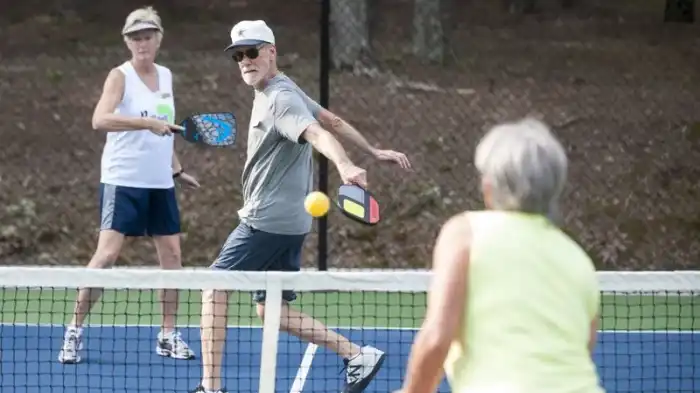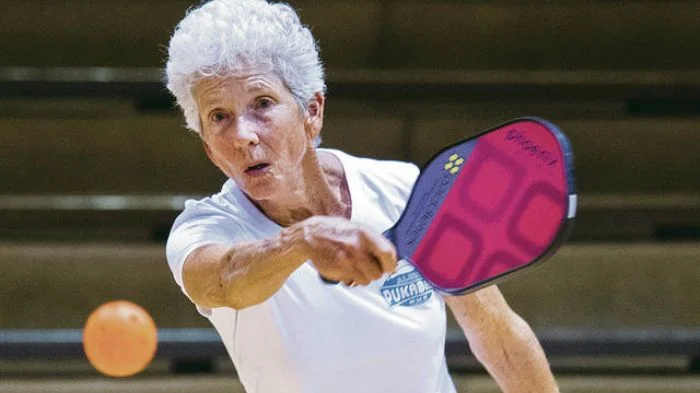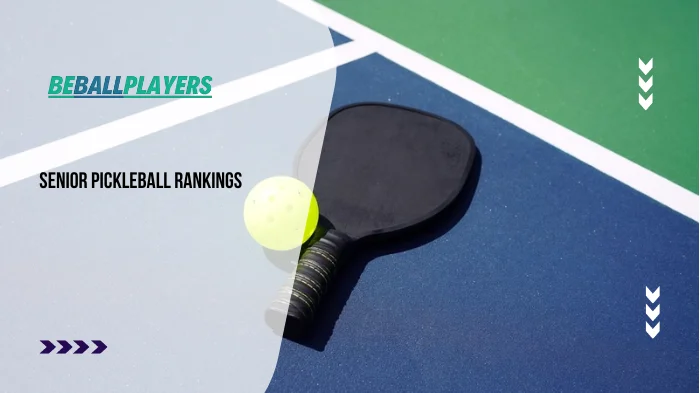Pickleball is a popular sport that has gained significant attention and recognition among seniors. This fast-paced paddle sport combines elements of tennis, badminton, and table tennis, making it a great way for older individuals to stay active and socialize.
As with any competitive activity, ranking systems help determine the skill level and performance of players, allowing for fair and exciting matches. In this blog, we will explore senior pickleball rankings and how they contribute to the overall growth and enjoyment of the sport.
Understanding Pickleball Rankings
Pickleball rankings are devised to objectively assess the performance of players across various age groups and skill levels. The rankings reflect a player’s ability and competitiveness in comparison to their peers and are often determined through official tournaments and matches. As pickleball becomes increasingly popular among seniors, dedicated Senior pickleball rankings for this age category have been established to provide accurate and fair assessments.

The Role of Senior Pickleball Rankings
Senior pickleball rankings play a crucial role in the development and promotion of competitive play among older individuals. These rankings help identify the top players in the senior category, motivating them to improve their skills and maintain their positions. Additionally, rankings provide a useful reference point for tournament organizers, enabling them to create balanced and exciting match-ups that ensure a fair and enjoyable experience for all participants.
Determining Senior Pickleball Rankings
In order to determine senior pickleball rankings, a variety of factors are taken into account. These factors may include tournament results, national or regional rankings, player performance against similarly skilled opponents, and overall win-loss records. As the pickleball community continues to grow, ranking algorithms are constantly evolving to ensure accuracy and fairness.
List Of Senior Pickleball Players Rankings
| Category | Rank | Player | Points |
|---|---|---|---|
| Men’s Singles 50+ | 1 | Mattias Johansson | 17500 |
| 2 | Paul Olin | 12125 | |
| 3 | Mircea Morariu | 6600 | |
| 4 | Rick Witsken | 4320 | |
| 5 | David Spearman | 4223 | |
| 6 | Dike “DK” Ajiri | 3134 | |
| 7 | Mark Palus | 3046 | |
| 8 | Mark Milner | 2334 | |
| 9 | Chuck Hamaker-Teals | 1928 | |
| 10 | Scott Fliegelman | 1888 | |
| Women’s Singles 50+ | 1 | Beth Bellamy | 11250 |
| 2 | Julie Johnson | 8668 | |
| 3 | Jennifer Dawson | 5825 | |
| 4 | Anna Shirley | 3970 | |
| 5 | Pocket Doc Unnoppet | 3231 | |
| 6 | Leslie Bernard | 2644 | |
| 7 | Nathalie Bagby | 1888 |
The Benefits of Senior Pickleball Rankings
Senior pickleball rankings provide numerous benefits to players, organizers, and the sport as a whole:
1. Motivation and Personal Growth
Pickleball rankings inspire players to constantly strive for improvement and compete at higher levels. By being aware of their ranking and the rankings of others, seniors can set goals, work on their weaknesses, and measure their progress. This constant motivation leads to personal growth and development, both on and off the court.
2. Tailored Tournaments
With the help of senior pickleball rankings, tournament organizers can create events that cater specifically to different skill levels within the senior age group. This ensures that players are matched against opponents of similar abilities, resulting in challenging and competitive matches.

3. Enhanced Community Engagement
Rankings foster a sense of community among senior pickleball players. Regularly updated rankings encourage interactions and friendly rivalries among players, providing a social aspect to the sport. This engagement leads to lasting friendships and a supportive network within the pickleball community.
Conclusion
Senior pickleball rankings play a crucial role in the sport’s growth and enjoyment among older individuals. By providing an objective assessment of skill and performance, rankings motivate players to improve and compete at higher levels. They also help organizers create balanced tournaments and foster a sense of community within the pickleball community. As the sport continues to gain popularity, maintaining accurate and well-structured rankings will be essential for its continued success.
Frequently Asked Questions
The purpose of senior pickleball rankings is to hierarchically rank players based on their skill level and performance in senior pickleball tournaments. It helps determine the ictus of players and allows for fair and competitive matchups in tournaments.
Senior pickleball rankings are primarily determined by a player’s performance in sanctioned senior pickleball tournaments. The ranking system takes into account various factors like winning percentage, opponents’ skill level, and the level of competition in tournaments. These rankings are often updated periodically to reflect the latest tournament results.
Yes, there are separate rankings for men and women in senior pickleball. This division recognizes the differences in skill levels and competition between male and female players. Separate rankings allow for fair competition within each gender.
Yes, senior pickleball rankings are often used as a criterion for selecting teams to represent their respective countries in international competitions. The rankings help identify the top players in each country and ensure a high level of competition during these events.
While senior pickleball rankings aim to provide fair matches, the competitive nature of the sport and the constant improvement of players can sometimes lead to variations in skill levels. Additionally, the availability and participation of top-ranked players may vary from tournament to tournament. However, the rankings serve as a general guideline to ensure fair competition and encourage skill development among senior pickleball players.

